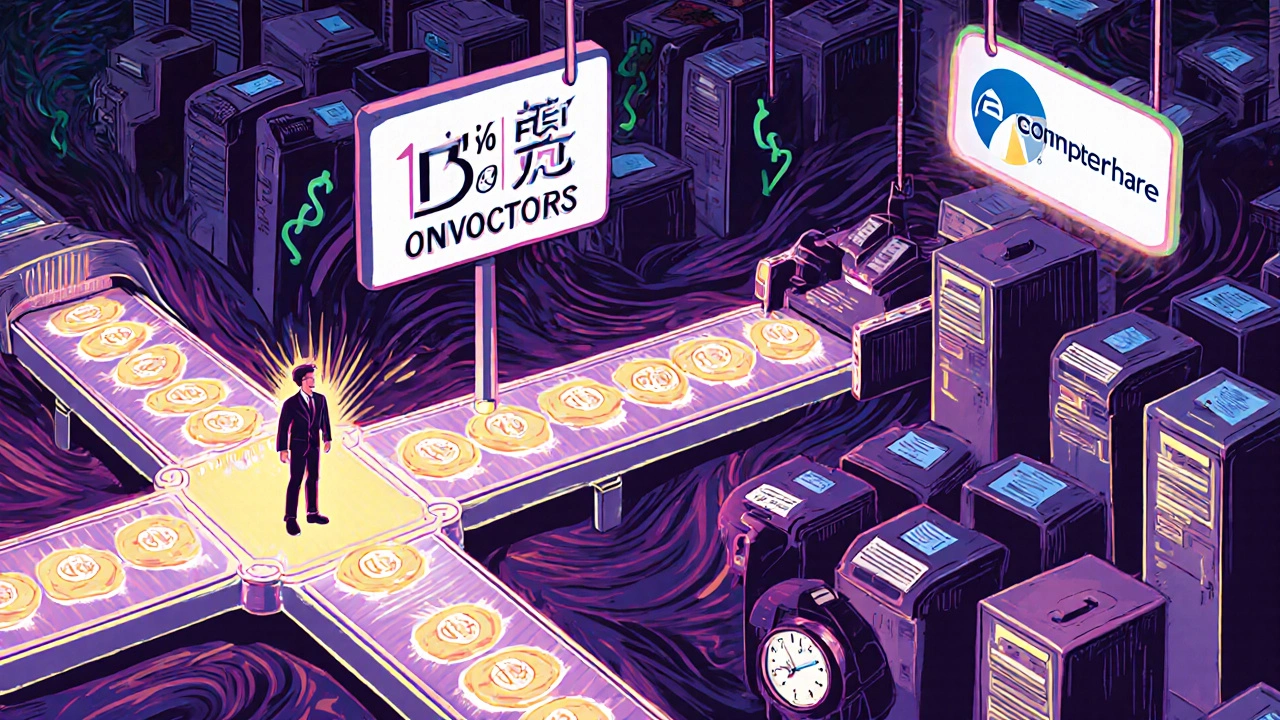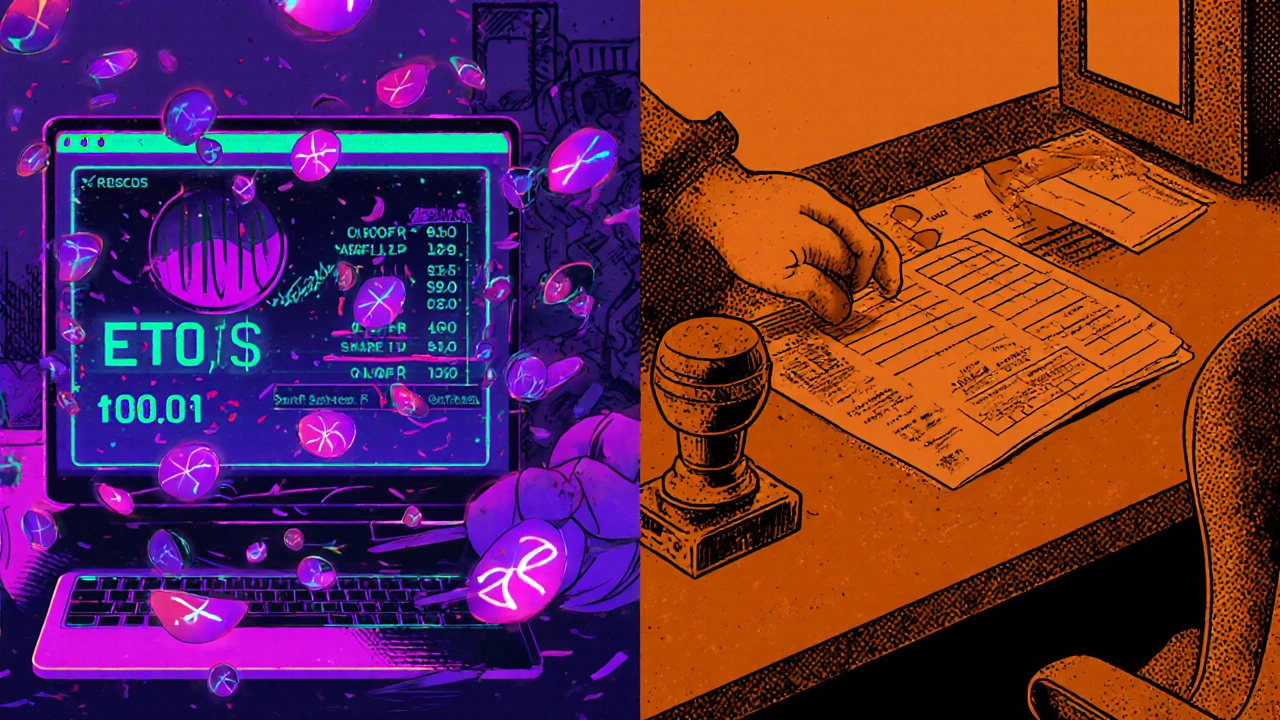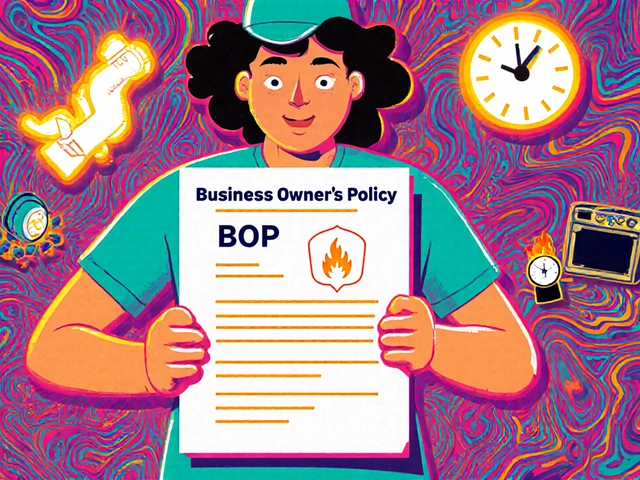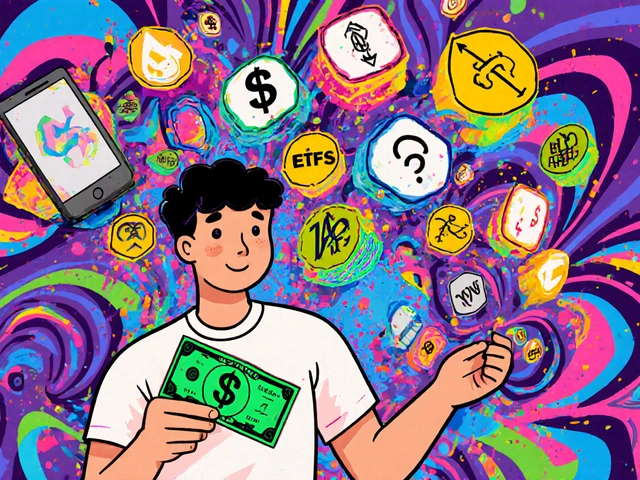When you own dividend-paying stocks, you get cash payments every quarter. That’s nice. But what if you could turn that cash into more shares - without paying a dime in fees? That’s the power of a DRIP - Dividend Reinvestment Plan. It’s not magic. It’s math. Compounding growth, one share at a time.
Back in the 1960s, companies like MCI started DRIPs to keep shareholders loyal and make investing easy for small folks. Today, the game has changed. Zero-commission trading wiped out the biggest advantage company DRIPs used to have. Now, the real question isn’t whether to reinvest - it’s where to reinvest: through your broker, or straight from the company?
How Broker DRIPs Work - Simple, Fast, Automatic
If you hold stocks in a brokerage account - say, at Charles Schwab, Fidelity, or Vanguard - you already have access to a DRIP. And it’s probably turned on by default.
Here’s how it works: When a dividend hits your account, the broker automatically buys more shares using that cash. No action needed. No forms. No waiting. If you own 100 shares of Coca-Cola and get $40 in dividends, your broker buys you 0.12 shares (or whatever the exact amount is) at that day’s price. Fractional shares? Yes. They’re standard now. Fidelity and Schwab let you reinvest down to 0.0001 shares. That means every single cent of your dividend goes to work. No cash sitting idle.
Enrollment? Three clicks. Go to your portfolio, find the stock, flip the switch from “No” to “Yes” under Reinvest?. Done. Schwab’s 2023 guide says it takes less than a minute. Fidelity executes 98.7% of reinvestments within one business day. Vanguard does it the same day for ETFs and mutual funds.
And it’s not just for individual stocks. You can reinvest dividends from ETFs, mutual funds, even REITs - all in one place. Want to grow your position in VTI, VOO, and JNJ all at once? Broker DRIPs handle it. No need to juggle multiple accounts.
Company DRIPs - The Old-School Way
Company-operated DRIPs are different. You’re not dealing with your broker. You’re dealing with the company - or more accurately, their transfer agent, like Computershare or American Stock Transfer & Trust Company.
These plans have perks. Some companies offer discounts. Johnson & Johnson gives you a 5% discount on shares bought through their DRIP. That’s not a small thing. If you reinvest $750 every quarter, you’re effectively getting $37.50 extra in value every three months - just for sticking with them. That’s a 5.26% return before the stock even moves.
Some companies also let you buy your first share directly through their plan. That’s called a Direct Stock Purchase Plan (DSP). No broker needed. Procter & Gamble and Coca-Cola still offer this. But here’s the catch: if you already own shares in your brokerage account, you can’t just enroll in the company DRIP. You have to move them.
To do that, you need to request that your shares be transferred out of “street name” (what brokers use) and into your name on the company’s shareholder register. That process? It costs money. Fidelity charges $25. Schwab charges $50. You’re paying to move your own stock - just to get access to a discount you could’ve gotten for free through your broker.
Timing Matters - And It’s Slower With Company DRIPs
Broker DRIPs reinvest on the dividend payment date. That’s it. The money goes in. The shares buy. Done.
Company DRIPs? Not so fast. They often wait for a set schedule - maybe once a month, or every 60 days. NerdWallet found that company DRIPs can take 3 to 5 business days to execute after the dividend is paid. That’s a window where prices move. In Q2 2023, the average S&P 500 stock swung 2.3% in five days. That’s not just noise. That’s real money lost - or gained - based on when the purchase happens.
Broker DRIPs eliminate that risk. You get the price on the day the dividend hits. No guesswork. No delay.

Diversification - The Silent Killer of Company DRIPs
Here’s the big one: company DRIPs lock you into one stock. One company. One plan. You can’t reinvest your Coca-Cola dividend into Apple. Or into an S&P 500 ETF. Or into a dividend-focused mutual fund. You’re stuck.
Broker DRIPs? You can reinvest in all of them. Fidelity data shows 78% of users who use DRIPs also hold positions in five or more different asset classes. That’s the power of diversification. You’re not putting all your eggs in one basket. You’re building a portfolio.
Think about it: if you’re using company DRIPs for seven different stocks, you’re managing seven separate accounts. Seven login pages. Seven sets of tax documents. Seven transfer agents to contact if something goes wrong. Trustpilot reviews for Computershare show a 2.8/5 rating, with nearly half of users complaining about slow processing and poor customer service. Meanwhile, Schwab’s DRIP gets a 4.6/5, with users praising how it just… works.
Costs - It’s Not What You Think
Back in 2018, company DRIPs had a clear edge: brokers charged $5 to $10 per trade. So reinvesting through the company saved you money.
That’s gone. Since 2019, nearly every major U.S. broker eliminated commissions. Today, 97% of brokerages offer free DRIPs, according to Bankrate. The only brokers still charging are small regional ones - and even then, it’s $1.25 on average. That’s less than the cost of a coffee.
Company DRIPs still don’t charge transaction fees. But you pay in other ways: transfer fees, time spent managing accounts, missed opportunities from lack of diversification. A Sharesight analysis found company DRIP users spend an average of 2.7 hours per month just managing paperwork. Broker DRIP users? 0.3 hours.

Who Still Benefits From Company DRIPs?
Not everyone should ditch company DRIPs. If you’re a long-term believer in one company - say, Johnson & Johnson - and you’re willing to jump through hoops, the 5% discount can be worth it. Especially if you’re reinvesting large amounts over decades.
Some companies are doubling down. Procter & Gamble raised its DRIP discount from 1% to 2% in September 2023. That’s a signal they still value loyal shareholders.
And if you’re just starting out and don’t have a brokerage account yet, a DSP might be your cheapest entry point. But once you open a brokerage account, that advantage evaporates.
The Verdict - Broker DRIPs Win for Most People
By 2025, Morningstar predicts 85% of new DRIP enrollments will be through brokers. That’s not an accident. It’s the result of better technology, lower friction, and smarter tools.
Broker DRIPs are automatic, fast, free, and flexible. You can reinvest in 12 stocks, 5 ETFs, and a REIT all at once. You don’t need to move shares. You don’t need to wait. You don’t need to call customer service.
Company DRIPs? They’re relics with a few bright spots. The discount is nice. The direct relationship is nice. But the cost of entry, the slow execution, the lack of diversification - it adds up.
If you’re new to dividend investing, start with your broker. Turn on DRIP. Set it and forget it. Let compounding do the work.
If you’re already in a company DRIP and you’re happy with it - great. But if you’re juggling multiple accounts, paying transfer fees, or missing out on better opportunities? It’s time to move.
The market changed. Your strategy should too.
Can I use a DRIP with ETFs and mutual funds?
Yes. Most major brokerages - including Vanguard, Fidelity, and Schwab - allow you to reinvest dividends from ETFs and mutual funds automatically. This is one of the biggest advantages of broker DRIPs. You can reinvest in dozens of funds with a single setting, helping you build a diversified portfolio without buying individual stocks.
Do I pay taxes on reinvested dividends?
Yes. Whether you take the dividend as cash or reinvest it, the IRS treats it the same. You owe income tax on the dividend amount in the year it’s paid. Your broker or company will send you a Form 1099-DIV at the end of the year showing the total dividends you received - reinvested or not. The tax liability doesn’t disappear just because you didn’t get cash.
How do I switch from a company DRIP to a broker DRIP?
First, open a brokerage account if you don’t have one. Then, contact your company’s transfer agent (like Computershare) and request a transfer of your shares to your broker. You’ll likely pay a $25-$75 fee. Once the shares are in your brokerage account, turn on DRIP through your platform’s settings. After that, you can stop managing the company DRIP entirely.
Is there a minimum investment to start a DRIP?
With a broker? No minimum. You can start reinvesting with just one share. With a company DRIP, some plans require you to own at least one share before enrolling - and if you don’t own any, you might need to buy your first share through the company’s DSP, which often has a small minimum, like $25-$50. But since brokers now offer fractional shares and zero fees, the company minimum is rarely worth it.
Are company DRIPs still worth it if they offer a discount?
Only if you’re deeply committed to that one company and reinvesting large amounts over many years. A 5% discount on Johnson & Johnson, for example, gives you a guaranteed 5.26% return before any stock price movement. That’s hard to beat. But you lose flexibility, face slower execution, and pay transfer fees. For most people, the convenience and diversification of a broker DRIP outweigh the discount - unless you’re investing $1,000+ per quarter into that single stock.
If you’re new to DRIPs, start with your brokerage. It’s the easiest, fastest, and most flexible way to grow your dividend portfolio. If you’re already in a company DRIP, ask yourself: Is the discount worth the hassle? If the answer is no - move your shares. Let automation work for you.






Comments
Brokers just made DRIPs stupid-simple - flip a switch and boom, your dividends are working overtime. No more juggling Computershare logins like it’s 2007. I used to love J&J’s 5% discount, but then I realized I was wasting 3 hours a month just filing PDFs and waiting for transfers. Now I’ve got VTI, VOO, and even a REIT auto-reinvesting. My portfolio’s grown 18% faster since I ditched company DRIPs. Stop overcomplicating it. Let the machines do the work.
Let me be brutally clear: company DRIPs are a nostalgic relic wrapped in bureaucratic inertia. The ‘discount’ is a psychological placebo - a 5% rebate on a single stock is meaningless when you’re missing out on sector diversification, market timing precision, and operational efficiency. The 2.3% volatility window? That’s not ‘risk’ - that’s a guaranteed drag on compounding. And let’s not pretend transfer fees are trivial - $50 to move your own shares? That’s institutional extortion. Broker DRIPs aren’t just better - they’re the only rational choice in a zero-commission, fractional-share, algorithm-driven world. Anyone clinging to Computershare is clinging to a typewriter while the internet burns.
It is interesting, you know, how we have moved from a world where investing was a personal relationship with a company - where you felt like a real owner, not just a data point in some algorithmic portfolio - to this hyper-efficient, automated, almost soulless system where everything is optimized for speed and convenience, but perhaps at the cost of meaning. I understand the math, I do - the fractional shares, the zero fees, the diversification - it all makes perfect sense. But I wonder, is there not something sacred in holding a share of Coca-Cola not because your broker auto-reinvested it, but because you chose it, because you believed in the syrup, the bottles, the legacy? I am not saying to reject brokers - I use one myself - but I wonder if we are losing the human rhythm of investing, the patience, the quiet loyalty. Maybe the discount is not just about price, but about presence. And perhaps, in our haste to be efficient, we forget that wealth is not just accumulated - it is cultivated.